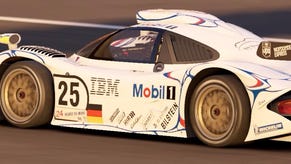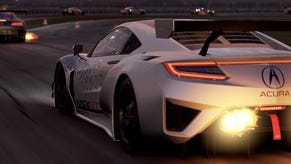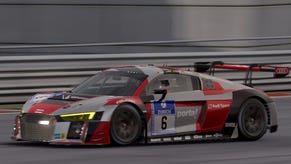Project Cars 2's upgrades have a different focus on Xbox One X
UPDATE: New graphics modes in the playable demo put to the test.
UPDATE 27/11/17 4:15pm: We've spent the day checking out the Project Cars 2 demo, which features three separate and distinct presentation modes for users with PlayStation 4 Pro and Xbox One X hardware. These modes are currently unavailable in the full game, which we cover in the main piece below, but we can reasonably expect the full patch to arrive in short order. Three separate modes are on offer - with an emphasis on resolution, visual quality or frame-rate - so while testing is only preliminary based on demo content alone, we wanted to put it to the test to get a flavour of what we can expect before the main game is updated.
There's only limited material available in the demo and users can't control car count or weather conditions, so we can't say that this is the definitive word on what the full game offers, but we can offer a broad outline of what each mode delivers. First up, resolution - this targets the highest pixel counts possible out of the three modes, and our measurements from the demo serve up a dynamic resolution window of 1152p to 1440p on PlayStation 4 Pro, rising to 1440p to 1620p on Xbox One X. Certainly on Xbox One X, this is similar to the current build users have available.
Next up, there's the enhanced visuals option, which ups the detail level considerably, and brings many of the trackside detail options up to par between PS4 Pro and Xbox One X - something that doesn't happen in the current version of the main game. Here, our resolution measurements are again dynamic, delivering the same 1440p to 1620p window on Xbox One X (skewing lower to 1440p during gameplay). The resolution window is wider on PS4 Pro - we found a minimum 882p, rising to 1440p max, but mostly sticking at 1080p. Although trackside detail is similar, Xbox One X has improvements to LODs and shadow quality here.
Finally there's the performance mode, which aims to deliver a 60fps lock on both systems. Based on what we've measured from the demo, Xbox One X's upper bounds remains at 1620p, but resolution tends to settle at 1080p through gameplay. There's a very similar presentation overall on PS4 Pro with the 1080p pixel-count remaining in place for most of the action, but the resolution range we found tracks between 972p to 1440p.
Performance-wise, while we have limited data points in the demo, we found that both Pro and Xbox One X ran nicely at 60fps in performance mode, though Pro could drop in wet weather conditions. Resolution mode looks pretty solid on both systems, while the enhanced visual modes can drop - we logged minimums of 55fps with tearing on both consoles, but again, only in wet weather conditions. Right now, first impressions suggest some interesting choices for users added to the mix then, and the sense is that the performance balance between the two consoles may have shifted. We'll update with more detail once the title updates for both consoles arrive.


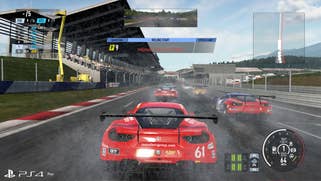
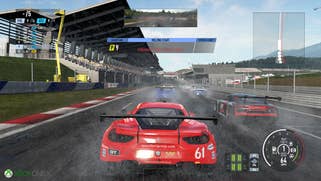

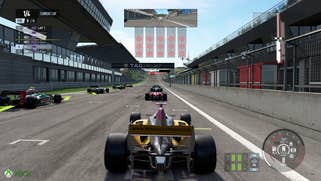

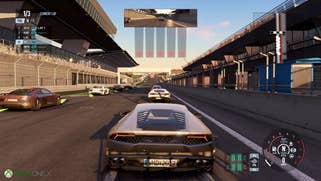
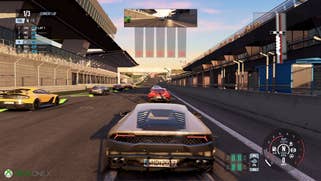


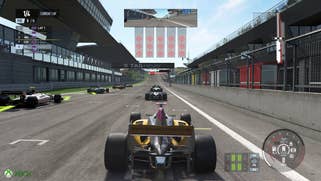

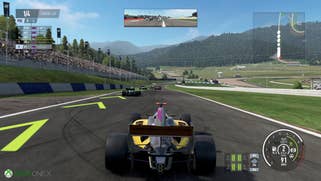
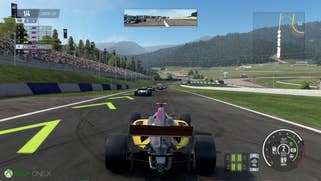
UPDATE 26/11/17 7:22pm: Project Cars 2 will be updated on Xbox One X with new features including enhanced resolution, enhanced visuals or enhanced performance. These features are actually available in the recently released playable demo, but aren't in the main game yet, which is why we missed it. This puts a new complexion on the title and we will update as soon as we can with a fresh analysis.
Original story: Project Cars 2 on Xbox One X is an intriguing example of a developer looking to achieve across the board improvements as opposed to focusing on a boost to pixel count alone. Instead of putting all resources into pushing more pixels, what if game makers targeted the inclusion of more of PC's higher-end features instead? The results are certainly much different to the lion's share of the X upgrades we've tested to date, and while the improvement over base hardware is clearly substantial, we're not sure the approach fully pays off.
First up, let's recap on the Project Cars 2 experience as it stands on existing console platforms. Dynamic resolution scaling is the order of the day, allowing Slightly Mad Studios to focus resources on simulation still further by diverting GPU power away from raw pixel count alone when required, accommodating features like improved dynamic weather conditions. Perhaps predictably, Xbox One fares worst here, handing in what we measured as an 864p-900p resolution window. PS4 retains the same lower bounds, but pushes higher to a max 1080p, offering more refinement and performance across the run of play.
PlayStation 4 Pro is the clear winner though, retaining the visual feature set of the base game but running it with a 1360p-1440p range - and on top of that, there's a big performance upgrade compared to base hardware, with only the most intensive scenes causing the game to shift from its target 60fps. The presentation isn't really clean enough to pass muster on a 4K screen, and though opinion may vary on this, we reckon 1080p display users get the better deal: smoother performance over base hardware, plus downsampling to improve anti-aliasing quality.
So where does this leave Xbox One X? Well, there is a resolution upgrade over PS4 Pro, but we're still left in the No Mans Land of a noticeably sub-native presentation when playing the game on an ultra HD screen. Measurements we've grabbed suggest that the new Microsoft hardware delivers pixel counts varying from 1440p to 1620p, depending on load. Anti-aliasing looks smoother on Xbox One X compared to the PlayStation 4 Pro equivalent, but this may be down to the improved pixel count. In terms of straight resolution comparisons, we've seen some big improvements on X, but this is not one of them - and that's entirely by design.
At best, our results suggest a maximum 27 per cent increase to base resolution, which is one of the lowest boosts we've seen in the jump from Pro to X, but what's clear is that Slightly Mad has decided to push up the quality sliders elsewhere within the presentation, using the extra GPU power for other things. The core game - the simulation and physics - remains identical, but there's plenty of leeway to improve the look of the game based on the underlying scalability in the technology, best represented by running the PC version fully maxed out.
The studio has taken the opportunity to push further on detail specifically, and there are a wealth of upgrades across any given scene. More trackside objects resolve in many areas and spectator density is higher. The overall look is impressive, with environments a touch busier and nicely fleshed out as a consequence. Level of detail streaming on Xbox One X also gets a boost over the PS4 Pro version too, with flat textures on the Sony console more quickly resolving as full geometry on the X. The 3D grass elements in any given scene also get an upgrade too - it's hardly dramatic, but it's certainly more dense and pushes a touch further into the distance.
Beyond that, the uplift in visual quality is rather more subtle. Shadow quality seems improved on Xbox One X, but there really isn't that much in it. Texture filtering seems unchanged, aside from areas where the improved resolution really kicks in, where the anisotropic filtering can benefit from higher levels of sampling. The overall takeaway is that the PlayStation 4 Pro version can look a little more sparse, a little blurrier, but it's still comparing pretty well bearing in mind the gulf in spec between the two mid-gen refresh consoles.
In terms of performance, there are two basic takeaways from this Xbox One X upgrade. Compared to base hardware, whether we're talking Xbox One or PlayStation 4, the increase in frame-rate is profound, and the majority of the experience plays out at a locked 60 frames per second. It perhaps here where the upgrade is most felt, and it's also where Project Cars 2 on Xbox One X shares most in common with the PlayStation 4 Pro version of the game, which we rated as easily the best way to play at launch for console users. There are obvious, clear benefits here in terms of both the look and the feel of the game.
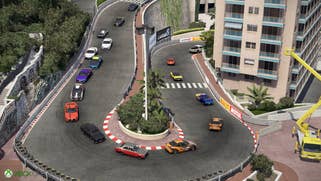

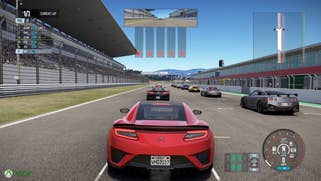
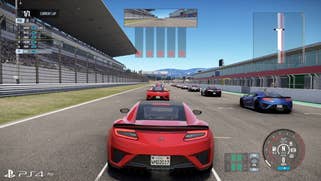

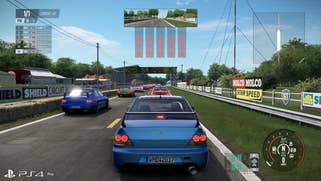

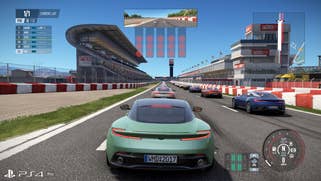
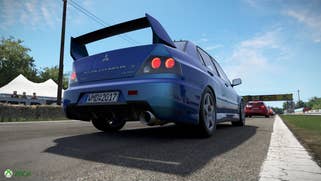
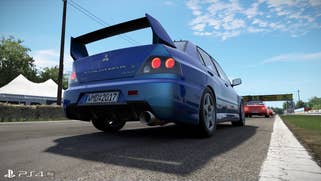
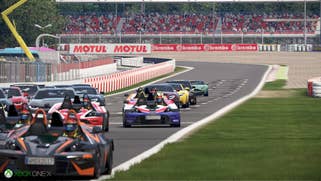

However, the more we played the game, the more it became clear that as improved as the Xbox One X version is, PlayStation 4 Pro has the edge in terms of top-end performance. Wet weather conditions plus a lot of cars on-screen can cause issues for the Microsoft console, dropping beneath 50fps in our stress tests, giving the Pro anything up to a 10fps advantage in like-for-like scenarios. Removing the wet weather factor but retaining the car-count on the same circuit sees the gap close significantly, but the new Microsoft console can still occasionally drop frames, accompanied by tearing.
We'll emphasis that these are edge-cases in areas where we've really pushed weather and vehicle count to the most demanding extremes, but what impressed us at launch was just how well the Pro handled the worst that we could throw at it - while not quite perfect, it demonstrated overhead for a range of conditions - in effect, more 60fps for more of the time. Xbox One X obviously improves over base systems, but doesn't quite perform as well as the Pro, which is surprising.
Overall, the Xbox One X upgrade for Project Cars 2 is an interesting example of a developer with different priorities in terms of upgrades. The focus isn't on maximising the game's impact on 4K screens - instead, the intent seems to be to take the PlayStation 4 Pro experience and improve on it with a small resolution bump and increased detail levels. There's the sense that Slightly Mad wants to bring across more of the fully enabled PC experience to the console hardware and in turn, that opens up an interesting question for debate: to what extent do those detail upgrades actually matter?
By and large, the player's focus in a racing game is more on the cars and the track than on environmental detail, and while the Pro version has fewer features, the sense is that Slightly Mad achieved a good balancing point with its console feature set. Xbox One X clearly has more detail, but it's not game-changing. And we also wonder whether the option to push pixel counts to 1800p territory was available - there is variation from game to game, from engine to engine, but by and large, 1800p upwards tends to work well on a UHD screen if native resolution rendering isn't an option. As things stand, Project Cars 2 on Xbox One X is similar to the Pro version in that we feel that the increased pixel count presents more cleanly when downscaled to 1080p, as opposed to upscaling on a 4K screen. Combined with the performance overhead issue, the Project Cars 2 patch for Xbox One X isn't quite the complete package we were hoping for, but the upgrade over base hardware is still substantial.


